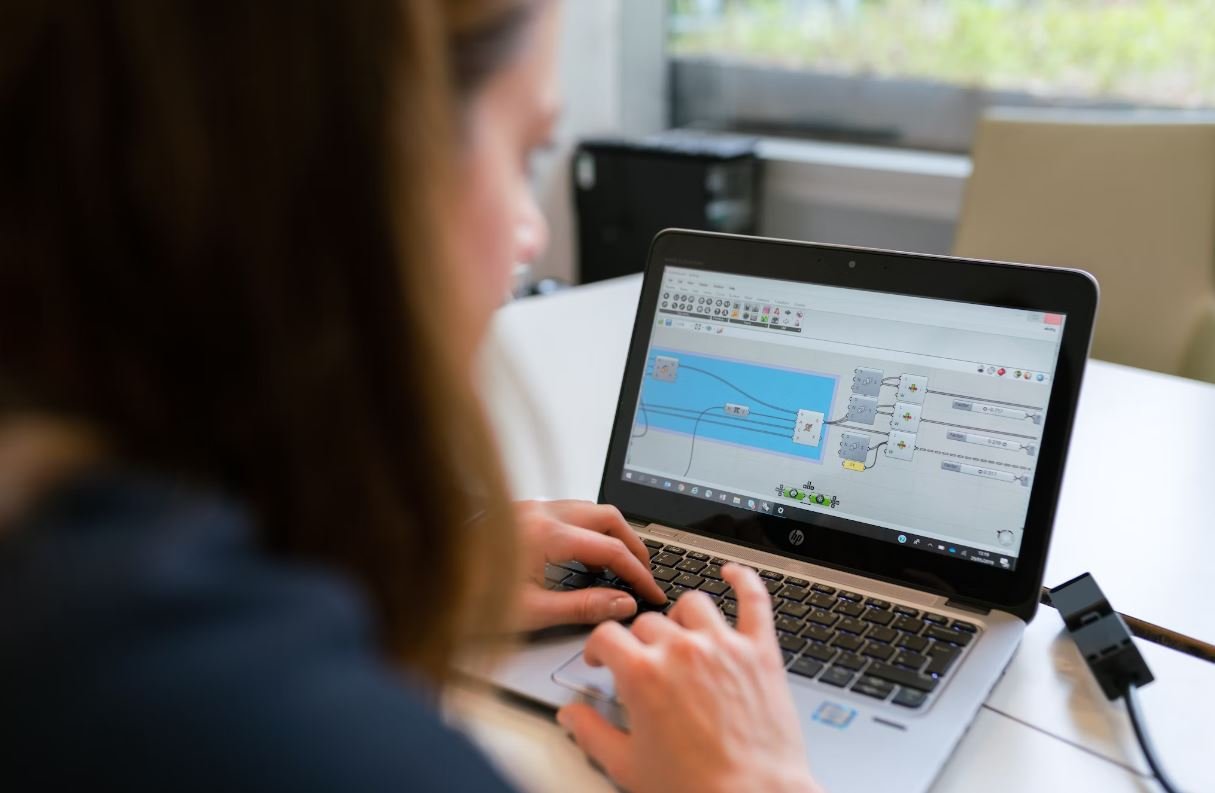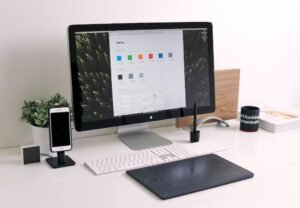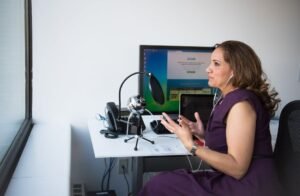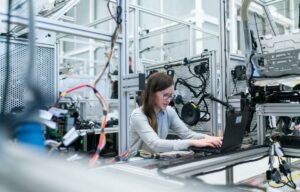Production Possibilities Curve Solman
The production possibilities curve is an economic model that illustrates the potential output combinations for two goods or services when resources are limited. It shows the trade-offs and efficiencies that can be achieved in production, given a fixed set of resources.
Key Takeaways
- The production possibilities curve represents the maximum output combinations of two goods that can be produced efficiently.
- It demonstrates the concept of opportunity cost, as producing more of one good requires sacrificing the production of another.
- The curve is downward sloping to indicate diminishing marginal returns, where producing more of one good becomes increasingly costly in terms of giving up the other good.
**The production possibilities curve is based on the assumption that the available resources are fixed and efficiently utilized**, meaning that all resources are used to their full potential and cannot be redistributed to increase production.
In addition, **the curve assumes a simplified economy with only two goods**, as it is easier to analyze the trade-offs between two goods rather than multiple goods and services.
**The shape of the curve is concave**, reflecting the concept of diminishing marginal returns. This means that as more resources are allocated to the production of one good, the amount of the other good that can be produced decreases at an increasing rate.
*For example, if an economy is currently producing 100 units of Good A and 200 units of Good B, reallocating some resources from Good B to Good A may increase the production of Good A by 10 units, but at the same time, the production of Good B may decrease by 25 units. This demonstrates the diminishing marginal returns of reallocating resources.*
Production Possibilities Curve Table
| Units of Good A | Units of Good B |
|---|---|
| 0 | 300 |
| 100 | 280 |
| 200 | 240 |
| 300 | 180 |
| 400 | 100 |
| 500 | 0 |
**The production possibilities curve can be graphically represented using a line graph** that connects the different output combinations. The negative slope of the curve signifies the opportunity cost of producing more of one good by giving up the production of another.
Additionally, the points lying along the curve represent efficient allocation of resources, as it is not possible to produce beyond the curve. Points inside the curve indicate underutilization of resources, while points outside the curve are unattainable given the limited resources.
Opportunity Cost and Efficiency
**Opportunity cost** is a fundamental concept represented by the production possibilities curve. It refers to the value of the next best alternative that is forgone in order to produce or consume something else.
**Efficiency** is achieved when an economy operates on the production possibilities curve, producing the maximum output combination with the given resources. Any point below the curve represents inefficiency, as resources are underutilized, while any point above the curve is unattainable.
Production Possibilities Curve Example
| Units of Good A | Units of Good B |
|---|---|
| 0 | 600 |
| 100 | 550 |
| 200 | 450 |
| 300 | 300 |
| 400 | 100 |
| 500 | 0 |
*Let’s consider an example where an economy produces only two goods, clothing (Good A) and food (Good B). The table above shows the production possibilities curve for this economy. As more units of clothing are produced, the production of food decreases.*
**Assuming the economy is currently producing 300 units of clothing and 300 units of food**, reallocating resources to produce 400 units of clothing would result in a decrease in food production to 100 units.
This example showcases the **opportunity cost** of increasing clothing production—it requires sacrificing a significant amount of food production. *This demonstrates the trade-offs that exist in decision-making when resources are limited.*
Conclusion
The production possibilities curve is a valuable economic model that highlights the trade-offs and efficiencies in production given limited resources. It demonstrates the concept of opportunity cost and the diminishing marginal returns associated with reallocating resources. By understanding the production possibilities curve, economists and policymakers can make informed decisions on resource allocation and optimal production levels.

Common Misconceptions
Misconception 1: Production Possibilities Curve Represents Real-Life Production
One common misconception about the Production Possibilities Curve (PPC) is that it directly represents the actual production in an economy. In reality, the PPC is a simplified graphical representation that models the trade-offs and opportunity costs of producing two goods with limited resources. It does not account for external factors, such as technological advancements or changes in resource availability, which can significantly impact actual production levels.
- The PPC is an economic model used to understand resource allocation.
- It assumes a fixed level of technology and resources.
- Real-life production may deviate from the PPC due to various factors.
Misconception 2: Points Outside the PPC Are Attainable
Another misconception is that points located outside the PPC are easily attainable. However, the purpose of the PPC is to illustrate the limits of an economy’s production possibilities given its current resources and technology. Points outside the curve represent levels of production that are currently unattainable without an increase in resources or technological advancements.
- Points beyond the PPC are only achievable with increased resources or improved technology.
- An economy operating beyond the PPC is unsustainable in the long run.
- Points inside the curve indicate underutilization of resources.
Misconception 3: The PPC Is Always a Straight Line
A common misconception is that the PPC is always a straight line. While it can take the form of a straight line in certain scenarios, such as when the opportunity cost remains constant, in reality, the shape of the PPC can vary. The curve can be concave or convex, reflecting changing opportunity costs as resources are reallocated between the production of different goods.
- The shape of the PPC depends on the slope, which represents the opportunity cost.
- A concave curve implies increasing opportunity costs.
- A convex curve implies decreasing opportunity costs.
Misconception 4: The PPC Assumes Efficient Use of Resources
Some people mistakenly believe that the PPC assumes efficient use of resources. However, the PPC only represents the potential production possibilities, regardless of how efficiently resources are utilized. In reality, an economy may not be operating at its maximum efficiency due to factors such as unemployment, wastage, or inefficient allocation of resources.
- The PPC assumes full employment of resources for simplicity.
- An economy may operate inside the PPC curve due to inefficiencies.
- Inefficiency can lead to the creation of new production possibilities.
Misconception 5: The PPC Does Not Change Over Time
One common misconception is that the PPC remains fixed and does not change over time. In reality, the PPC is dynamic and can shift due to various factors. For example, advancements in technology can lead to an outward shift of the curve, indicating an increase in production possibilities. Changes in resource availability, such as the discovery of new natural resources, can also impact the PPC.
- The PPC is influenced by changes in technology, resources, and economic conditions.
- An outward shift of the PPC indicates economic growth.
- An inward shift of the PPC indicates a decrease in production possibilities.

Introduction
The Production Possibilities Curve (PPC) is a fundamental concept in economics that illustrates the maximum combination of goods or services an economy can produce with its limited resources. This article aims to provide a visual representation of the PPC through a series of interactive, informative tables. Each table will present distinct data and elements to enhance understanding and engagement.
Table 1: Production Possibilities Curve
This table showcases the PPC by presenting alternative production combinations of two goods: computers and cars. It illustrates the trade-offs and opportunity costs of producing more of one good at the expense of the other.
| Computers (millions) | Cars (millions) |
|———————-|—————–|
| 0 | 10 |
| 1 | 9 |
| 2 | 7 |
| 3 | 4 |
| 4 | 0 |
Table 2: Efficiency vs. Inefficiency
Efficiency is a critical concept within the PPC framework. This table demonstrates the contrast between efficient and inefficient allocation of resources. The data highlights the maximum output achievable through efficient resource allocation.
| Efficient Allocation | Inefficient Allocation |
|———————-|———————–|
| Computers: 3 | Computers: 2 |
| Cars: 4 | Cars: 3 |
Table 3: Economic Growth
Economic growth shifts the PPC outward, indicating an increase in a country’s productive capacity. This table compares the production combinations of computers and cars before and after economic growth.
| | Before Growth | After Growth |
|————————|—————|————–|
| Computers (millions) | 2 | 4 |
| Cars (millions) | 7 | 9 |
| Increase from Previous | +2 | +2 |
Table 4: Opportunity Cost
Opportunity cost refers to the value of the next best alternative forgone when making a choice. This table highlights the opportunity costs associated with various production choices between computers and cars.
| | Computers (millions) | Cars (millions) |
|————|———————-|—————–|
| Option 1 | 3 | 4 |
| Option 2 | 2 | 5 |
| Option 3 | 1 | 6 |
| Option 4 | 0 | 7 |
| Option 5 | -1 | 8 |
Table 5: Productivity
Productivity plays a significant role in shaping the PPC. This table showcases the impact of changes in productivity, leading to an increase or decrease in output levels.
| | Initial Output | Increased Productivity | Decreased Productivity |
|——————————|—————-|————————|————————|
| Computers (millions) | 2 | 3 | 1 |
| Cars (millions) | 6 | 7 | 5 |
| Change from Initial (Computers) | +1 | -1 | |
| Change from Initial (Cars) | +1 | | -1 |
Table 6: Technological Advancements
Technological advancements can positively influence an economy’s PPC by allowing more output for the same level of input. This table highlights the impact of technological advancements on the production combinations of computers and cars.
| | Before Advancement | After Advancement |
|——————————|——————–|——————|
| Computers (millions) | 3 | 4 |
| Cars (millions) | 7 | 8 |
| Change from Previous (Computers) | +1 | +1 |
| Change from Previous (Cars) | +1 | +1 |
Table 7: Unattainable Combinations
This table showcases the concept of unattainable combinations within the PPC framework. It presents combinations of computers and cars that lie beyond the economy’s current productive capacity.
| Computers (millions) | Cars (millions) |
|———————-|—————–|
| 5 | 3 |
| 6 | 1 |
| 7 | 0 |
| 8 | -1 |
Table 8: Scarcity and Choice
Scarcity and choice are pivotal aspects of the PPC. This table demonstrates the concept by presenting the limited availability of resources and the consequential choices made by an economy.
| Resources Available (in billions) | Computers Produced (in millions) | Cars Produced (in millions) |
|———————————-|———————————-|—————————-|
| 10 | 3 | 4 |
| 8 | 2 | 3 |
| 6 | 1 | 2 |
| 4 | 0 | 1 |
| 2 | 0 | 0 |
Table 9: Specialization and Trade
Specialization and trade allow countries to produce at a point beyond their PPC. This table showcases the production gains achieved through specialization and trade between two hypothetical countries: Country A and Country B.
| | Country A | Country B |
|—————|———–|———–|
| Computers | 4 | 2 |
| Cars | 2 | 4 |
| Total Output | 6 | 6 |
Table 10: Comparative Advantage
Comparative advantage is a key principle in international trade. This table presents the comparative advantage of Country A and Country B by comparing their opportunity costs of producing computers and cars.
| | Country A | Country B |
|—————|———–|———–|
| Opportunity Cost (Computers) | 0.5 | 2 |
| Opportunity Cost (Cars) | 1 | 0.5 |
In this article, we explored the Production Possibilities Curve (PPC) through a series of interactive tables. These tables covered various aspects related to the PPC, such as efficiency, economic growth, opportunity cost, productivity, technological advancements, and trade. By visualizing the data and concepts in these tables, we gain a deeper understanding of the potential production combinations and the trade-offs involved. The PPC serves as a powerful tool for decision-making and understanding the fundamental economic principles.
Production Possibilities Curve FAQs
FAQ 1: What is a Production Possibilities Curve?
A Production Possibilities Curve (PPC), also known as a Production Possibilities Frontier (PPF), is a graphical representation of the different combinations of goods and services that can be produced with a given set of resources and technology.
FAQ 2: How is the Production Possibilities Curve constructed?
The Production Possibilities Curve is constructed by plotting the different combinations of goods and services on a graph, with one good or service on the x-axis and the other on the y-axis. Each point on the curve represents a combination that fully utilizes all available resources.
FAQ 3: What does a point inside the Production Possibilities Curve represent?
A point inside the Production Possibilities Curve represents an inefficient use of resources, as it shows that not all available resources are being fully utilized to produce goods and services.
FAQ 4: What does a point outside the Production Possibilities Curve represent?
A point outside the Production Possibilities Curve represents an unattainable combination of goods and services, given the current level of resources and technology. It indicates that it is not possible to produce that particular combination with the available resources.
FAQ 5: What factors can cause the Production Possibilities Curve to shift?
The Production Possibilities Curve can shift due to changes in factors such as technology, resources, and trade. For example, improvements in technology can allow for more efficient production and can shift the curve outward, indicating an increase in potential output.
FAQ 6: What does it mean when the Production Possibilities Curve is a straight line?
When the Production Possibilities Curve is a straight line, it indicates a constant opportunity cost. This means that the resources used to produce one good or service cannot be easily switched to produce the other good or service without a decrease in efficiency.
FAQ 7: How does the Production Possibilities Curve illustrate scarcity?
The Production Possibilities Curve illustrates scarcity by showing the trade-offs that occur when resources are limited. It demonstrates that producing more of one good or service necessitates producing less of another, highlighting the fundamental economic problem of choice and scarcity.
FAQ 8: What is the relationship between the Production Possibilities Curve and economic efficiency?
The Production Possibilities Curve illustrates economic efficiency by depicting the maximum possible output that can be achieved with available resources. Points on the curve represent efficient production, while points inside the curve indicate inefficiency.
FAQ 9: How can the Production Possibilities Curve be used to analyze opportunity cost?
The Production Possibilities Curve can be used to analyze opportunity cost by comparing the trade-offs between different combinations of goods and services. The opportunity cost of producing more of one good is represented by the amount of the other good that must be given up.
FAQ 10: How does the Production Possibilities Curve relate to economic growth?
The Production Possibilities Curve relates to economic growth as it represents the potential for an economy to increase its overall output of goods and services. Through advancements in technology, increases in resources, or improvements in efficiency, the curve can shift outward, indicating greater economic growth potential.




